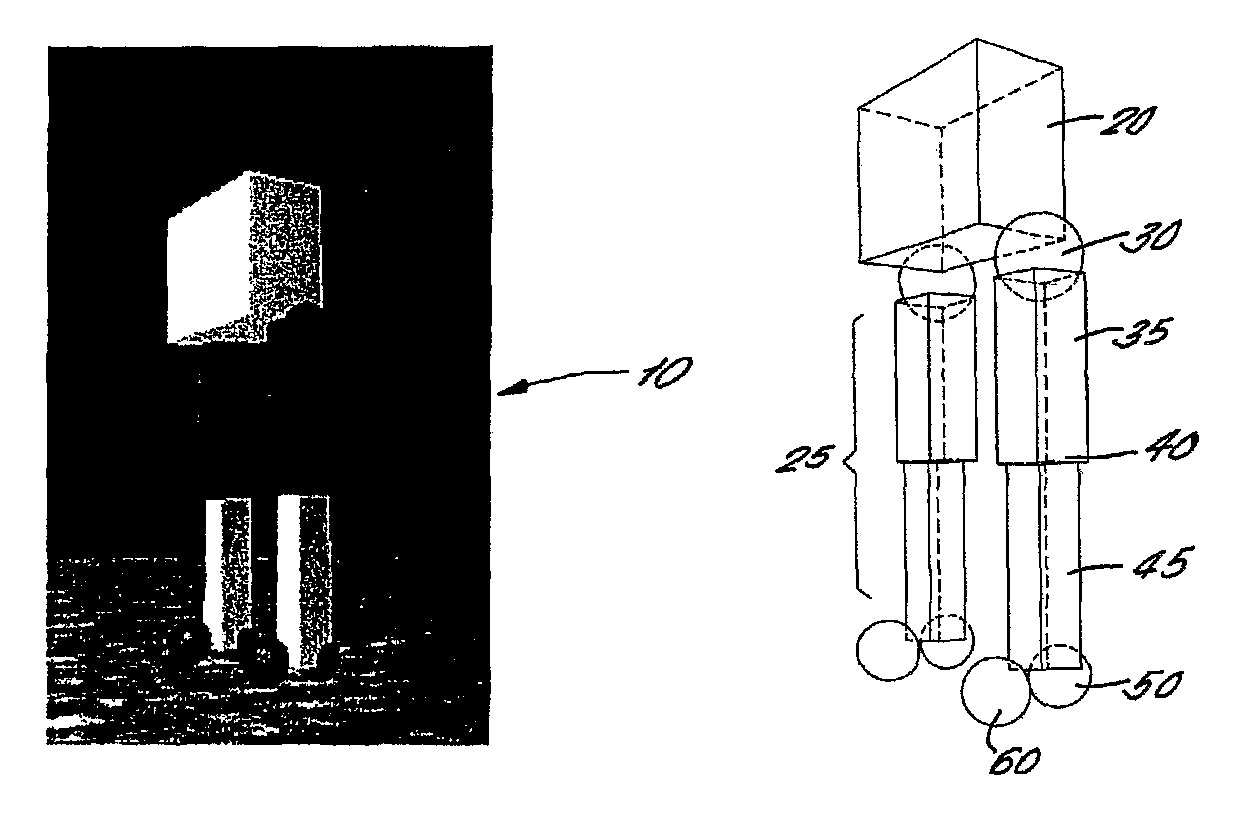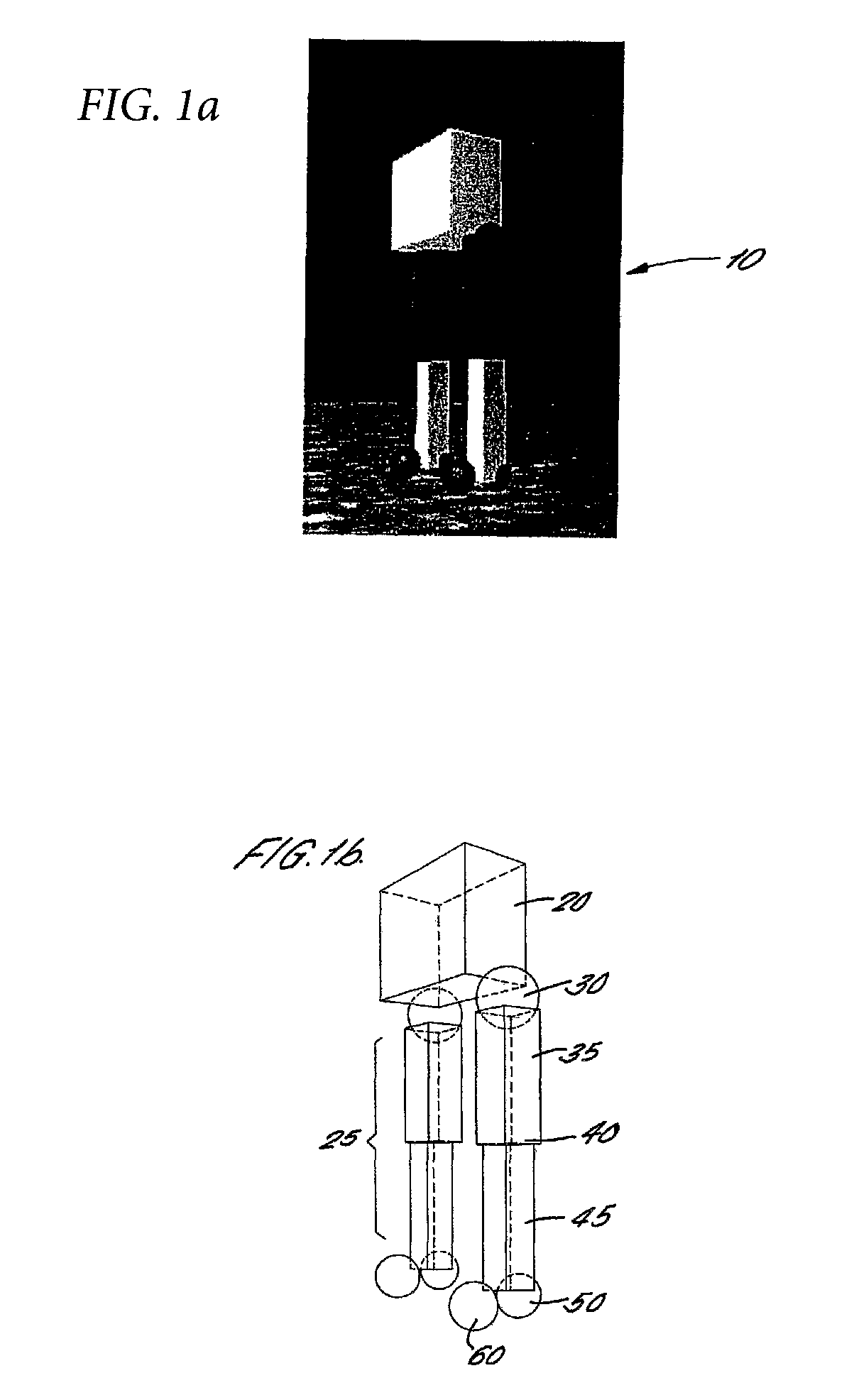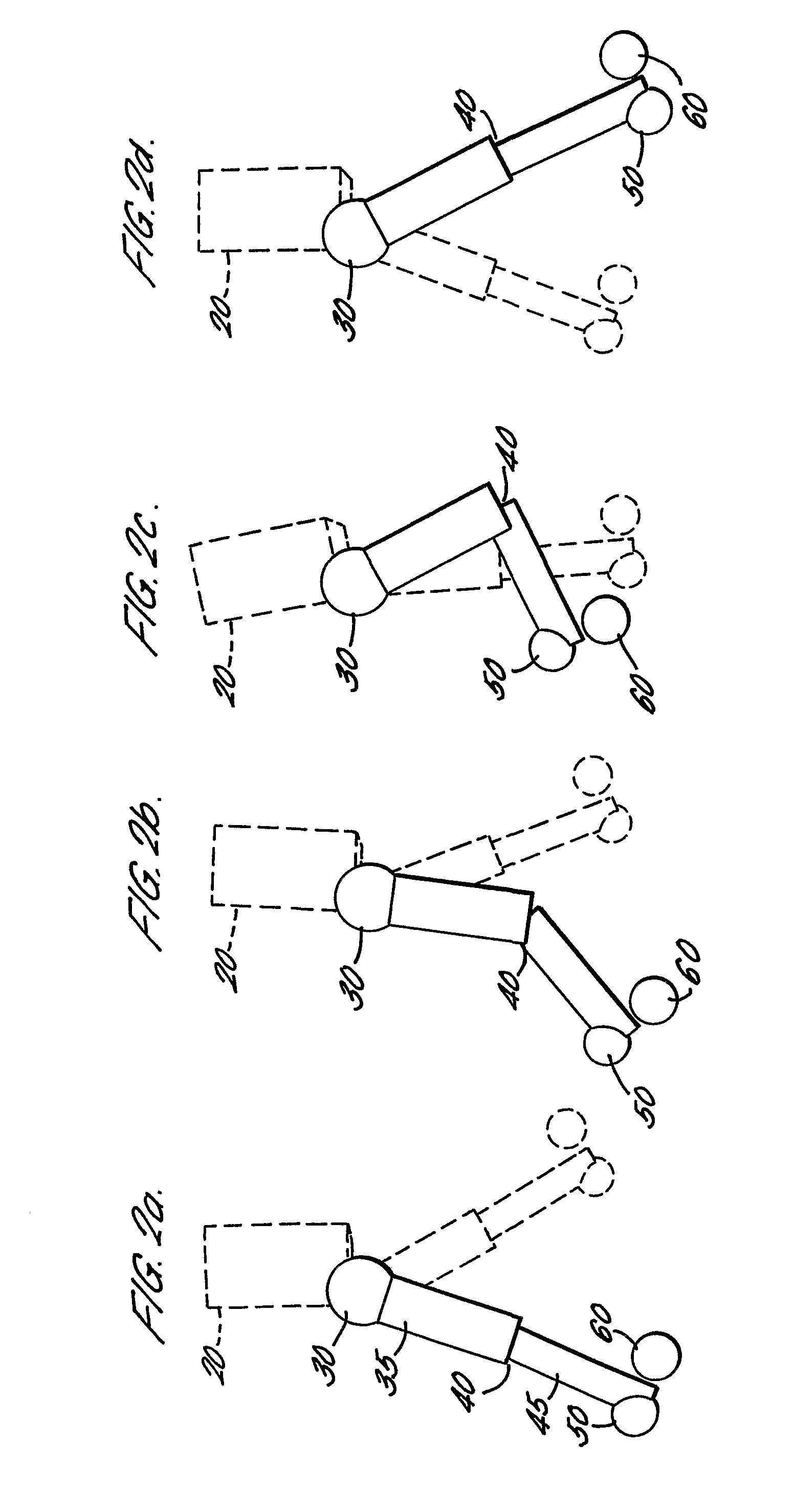Bipedal walking simulation
a bipedal and simulation technology, applied in adaptive control, program control, instruments, etc., can solve the problems of inability to control the movement inability to generalize walking motions, and high data storage capacity requirements, so as to improve the perception realism of the body dynamics of a biped or other device/object having more than two legs, improve the robustness of walking gaits, and constrain the effect of walking dynamics
- Summary
- Abstract
- Description
- Claims
- Application Information
AI Technical Summary
Benefits of technology
Problems solved by technology
Method used
Image
Examples
Embodiment Construction
[0061]The following will describe, by way of example, the currently preferred arrangement which illustrates the various aspects of the present invention. The bipedal object in the following example is computer-generated. However, it is to be understood that the principles underlying the present invention are equally applicable to quadrupeds and other multi-limbed creatures and even to control of other limits such as birds' wings, provided that they exhibit cyclical movement in use. Furthermore, it is to be understood that the present invention is equally applicable to embodied devices such as multipedal and, more specifically, bipedal robots.
[0062]Referring first to FIGS. 1a and 1b, fully rendered and wire-framed versions of a computer-generated biped 10 are respectively shown. The biped is simulated using a rigid body dynamics simulation program. Such programs are well known in the art and are available either as commercial or as freeware / open source software. Rigid body dynamics s...
PUM
 Login to View More
Login to View More Abstract
Description
Claims
Application Information
 Login to View More
Login to View More - R&D
- Intellectual Property
- Life Sciences
- Materials
- Tech Scout
- Unparalleled Data Quality
- Higher Quality Content
- 60% Fewer Hallucinations
Browse by: Latest US Patents, China's latest patents, Technical Efficacy Thesaurus, Application Domain, Technology Topic, Popular Technical Reports.
© 2025 PatSnap. All rights reserved.Legal|Privacy policy|Modern Slavery Act Transparency Statement|Sitemap|About US| Contact US: help@patsnap.com



